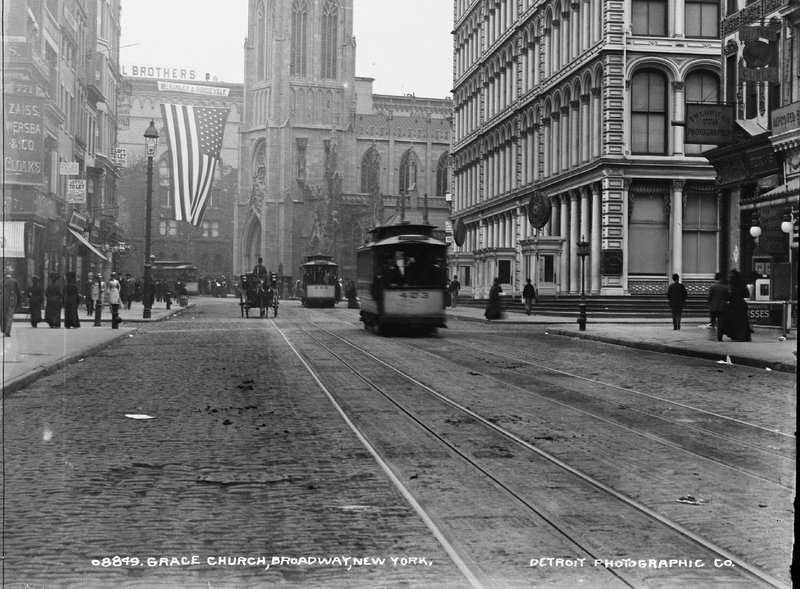5. Belgian Blocks Were Sized Relative to a Horseshoe
 Broadway, circa 1900. Photo by Detroit Publishing Co., from Library of Congress
Broadway, circa 1900. Photo by Detroit Publishing Co., from Library of Congress
If you think back to the turn of the 20th century, a lot of intra-city freight transportation was still going by horse and carriage. The paving not only had to withstand quite a lot of traffic, it was even shaped to make it more convenient for horses and freight. The HDC writes, “By 1900, the stones used for such purposes were shaped to a relatively uniform width of between 4 and 5 inches, apparently proportioned to the size of a horseshoe. This allowed horses drawing heavy loads to secure a firm foothold in the joints between blocks.”
Today, the most common Belgian blocks in New York City are about 4 inches wide by 7 inches long – a type known as the “Manhattan standard” which date from 1912 to 1938. Another type of block, which was first utilized in the 1870s, is longer and can be up to 14 inches wide. The HDC writes that these blocks are “less regular overall, with rounded tops and generally wider joints between blocks.”





